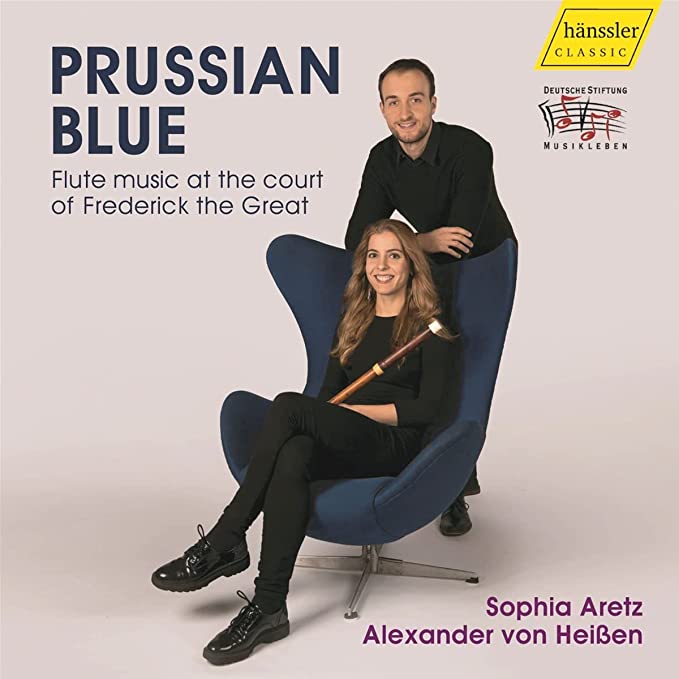Flute music at the court of Frederick the Great
Sophia Aretz flute, Alexander von Heißen harpsichord
56:17
hänssler classics CD HC22024
Click HERE to buy this recording on amazon.co.uk
[Besides supporting the artists, these sponsored links mean this site remains available and FRE TO ACCESS]
Frederick the Great’s association with the flute is well known. Although his love of music and the arts in general caused problems with his father, he persisted in establishing his own ensemble, acquiring all the latest music and studying with Quantz, one of the earliest virtuosi on the relatively new instrument. Once head of state, his Kapelle grew and included many of the biggest names of the day, including C P E Bach,* who is often portrayed as being unhappy in his role as a “mere” accompanist rather than the court composer. Perhaps there was some melancholy among the musicians – four out of the five pieces on this extremely impressive CD are in minor keys. The recital is bookended by a pair of three-movement sonatas by the king himself; while they are clearly the product of the age, these are no mechanical, half-hearted efforts – from the very first notes of the E minor sonata, we are drawn into a dreamy world of reflection; in the faster movement, his catchy melodies and clever passagework mean interest never wanes. Also on the programme are a four-movement trio sonata attributed to Quantz (in which von Heißen takes the second “treble” with his right hand – hold on to your hat for one chord sequence in the second movement!), a charming sonata by Frederick’s sister, Anna Amalia, and – of course! – C P E Bach’s D minor sonata H569.
Aretz and von Heißen are perfect companions in this music. While she gracefully shapes the slower movements with a warmly caressing tone, she is utterly undaunted in the faster pieces – I had to re-listen to two passages several times to work out how she had managed to fit all of the notes into the time available! Like poor old Bach, von Heißen plays a mostly subservient role but, in crafting the harmonic background for the “star”, he is the master of slightly holding back or pressing on to keep the music alive – and the ability to play unequally between his hands is outstanding. For the perfect demonstration of these features, just listen to the opening of Track 8 (the opening Adagio of Anna Amalia’s sonata) – it is simply gorgeous!
Brian Clark
*Bach shared the position with Carl Friedrich Christian Fasch (son of the perhaps more famous Zerbst Kapellmeister, Johann Friedrich Fasch, who (coincidentally?) wrote at least one sonata for two flutes, whose source material is in Berlin…). The younger Fasch was recommended to the king by one of his leading violinists, Franz Benda, as “the most gifted of accompanists”.
